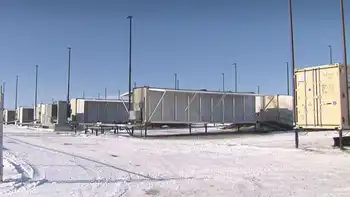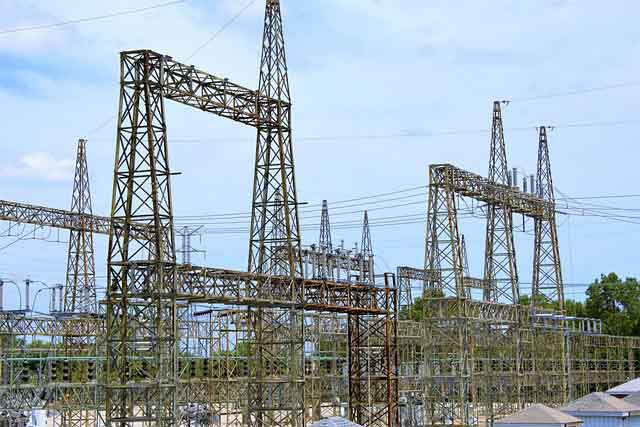The challenge in Copenhagen: reshaping the world
By Associated Press
NFPA 70e Training
Our customized live online or in‑person group training can be delivered to your staff at your location.

- Live Online
- 6 hours Instructor-led
- Group Training Available
No wonder a deal will be tough to cut.
In recent weeks, prospects brightened, then dimmed, then revived again.
U.S. President Barack Obama dampened expectations when he said during his Asian tour a final package could not be completed at the conference. He then lifted hopes by signaling the U.S. might go further in the talks in the Danish capital than had been expected because of lagging U.S. legislation.
Hoping to nudge negotiations off dead center, key governments have strengthened pledges to control their nations' greenhouse gases, the heat-trapping emissions blamed for global warming.
But everyone is still waiting to see what the U.S. will do.
The major economies "are coming to Copenhagen ready to fill in the blanks. They are all looking to see what happens in Congress, and what the U.S. is able to bring to the table," said climate analyst Jennifer Morgan of the World Resources Institute, a Washington think tank.
Facing mounting impatience, the U.S. delegation could bring a provisional number to the conference, promising at least a 17 percent cut in greenhouse gases over the next decade, measured against 2005 — a number drawn from bills awaiting congressional approval.
"It's a bit of a balancing act," said U.S. analyst Alden Meyer, of the Union of Concerned Scientists. The Obama administration wants to satisfy the international demand for clarity without seeming to pre-empt U.S. lawmakers, "providing ammunition for opponents in the Senate."
More than 65 heads of government will attend the final days of the December 7-18 conference, investing their personal prestige in the outcome. They include the leaders of Britain, France, Germany, Australia, Brazil, Indonesia, Japan and Spain.
Success is a matter of definition. Two years ago, when negotiations began, delegates anticipated a full treaty would be signed in Copenhagen to succeed the 1997 Kyoto Protocol, which set emissions limits on 37 industrial countries. The U.S. rejected Kyoto because it imposed no obligations for China, India and other rapidly emerging economies.
Now the Danish hosts and the United Nations say it will be enough to nail down all the political elements, leaving the details, technical issues and legal language to be filled in over the following six months to a year.
Many developing countries say that's not good enough, and insist Copenhagen aim for a full-fledged legal document.
The divide over Copenhagen's goals reflects an abiding distrust between manufacturing powerhouses that built vast riches over 200 years, while spewing carbon dioxide and other industrial gases into the atmosphere, and countries still struggling to end hunger within their borders.
A new militant African bloc could complicate the Copenhagen negotiations. The 50 or so nations briefly walked out of committee meetings at the last round of talks in Spain earlier this month, alleging Western countries were not negotiating in good faith.
Whatever agreements emerge on Copenhagen's numerous issues, they must be accepted by all 192 countries.
As in the Kyoto accord, whose emission reductions expire in 2012, these talks aim to negotiate 2020 reduction targets for industrial countries. Unlike Kyoto, developing countries will be asked to contribute by presenting detailed plans for shifting to low-carbon growth, although it is unclear how that would be written into the accord and whether they would be held to account for their promises.
The second crunch issue is money: how much wealthy countries will give poor countries to cope with climate change, whether major emerging economies should chip in to a global fund, and how it will be distributed and managed, giving developing countries an equal voice. Experts say $150 billion a year may be needed eventually.
Scientists say carbon emissions must level off by 2015 and then start to rapidly decline. Within 40 years, manmade emissions should be half what they were in 1990 — and 80-95 percent lower in the economically advanced countries — to avoid the worst scenarios of climate disasters.
"We are seeking nothing less than the transformation of our energy system," Jonathan Pershing, the chief U.S. delegate, told negotiators at the final pre-Copenhagen round of talks.
Activists say that transformation must be comparable in scale to the Internet revolution: more wind, solar and nuclear energy, electric or biofuel cars and public transportation, smart electricity grids that reduce waste, concentrated high-rise cities that eliminate long commutes, an end to deforestation and more efficient carbon-storing agriculture.
The UN says the targets announced by industrial countries for 2020 add up to reductions of 16 to 23 percent below 1990 levels, far less than the 25 to 40 percent scientists say is needed.
In recent weeks some governments had upped their bids, while some developing countries promised energy reforms. The new Japanese government pledged to cut emissions by 25 percent from 1990 levels. Norway committed to a 40 percent decrease, and South Korea, not obliged to accept a carbon cap, volunteered a target of 4 percent below 1990.
Among developing countries, Indonesia pledged to stem its carbon-producing deforestation and reduce emissions by 26 percent. Brazil said it would roll back Amazon deforestation by 80 percent by 2020. China, the world's largest emitter, says renewables such as solar and wind power will be 15 percent of its energy package by 2020, and it will reduce its energy consumption by 20 percent per unit of production.











